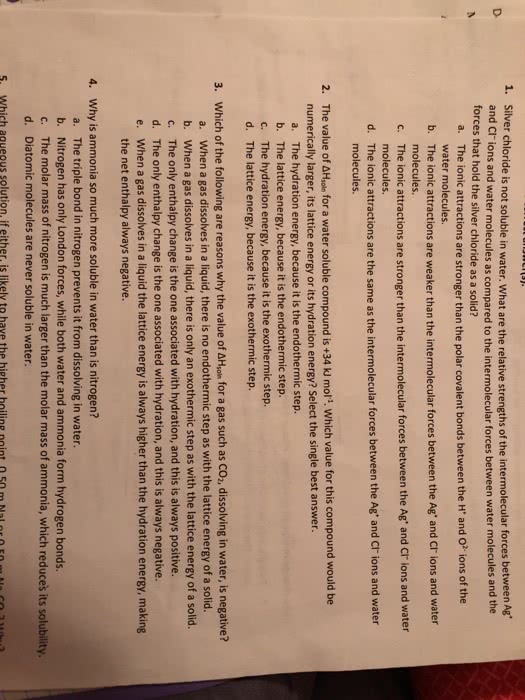CHEM 1A03 Lecture Notes - Lecture 5: Lipophilicity, Dynamic Equilibrium, Lattice Energy

35
CHEM 1A03 Full Course Notes
Verified Note
35 documents
Document Summary
Enigmatic medium expands when freezing, solid is less dense than liquid state. Dissolves a variety of solutes as a solvent. Strong solvation properties for most polar molecules. Hydrogen bonding: strongest intermolecular force among electrically neutral molecules. Each water molecule can form 4 hydrogen bonds: 2 with its lone pairs and 2 with its hydrogen atoms. Energy is released when the strong dipole in water interacts with other strong dipoles in other molecules. Energy is released when gas-phase ions come together to from a solid lattice. This latter energy is known as lattice enthalpy. If the solvation enthalpy is greater than the lattice enthalpy, a solid will dissolve in water. Sodium chloride = strong electrolyte induce higher currents dissolves completely into ions in 2water. Electrolyte strength is the degree of ionization of an electrolyte in aqueous solution. Use reaction quotient: q ratio of product to reactant activities. Q is a ratio of activities, a at any given time.


